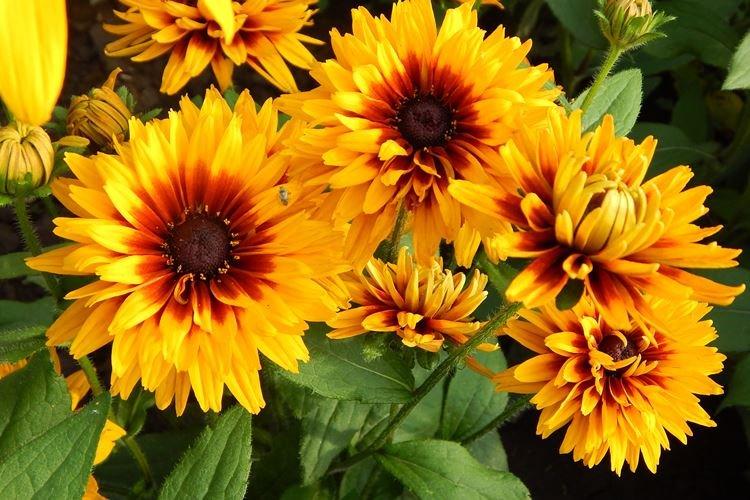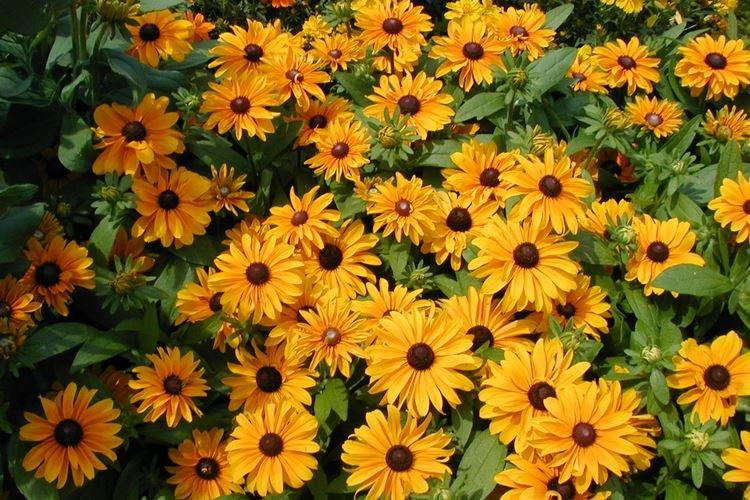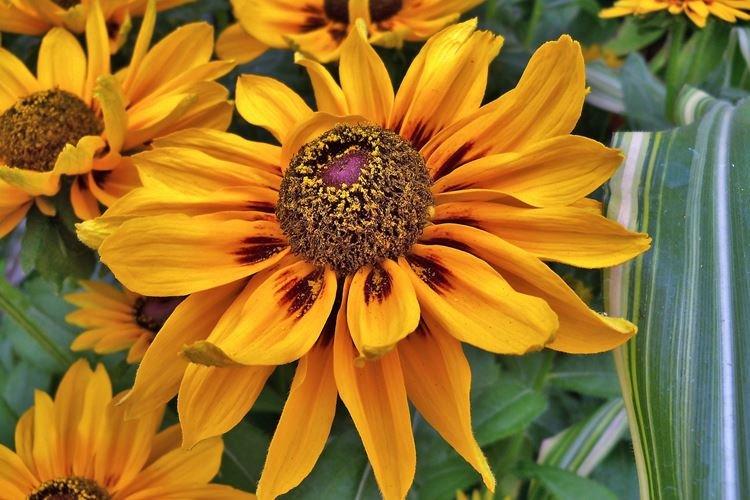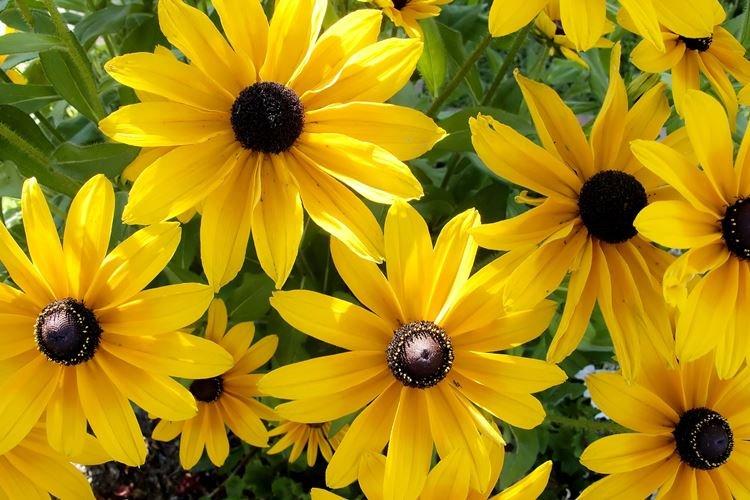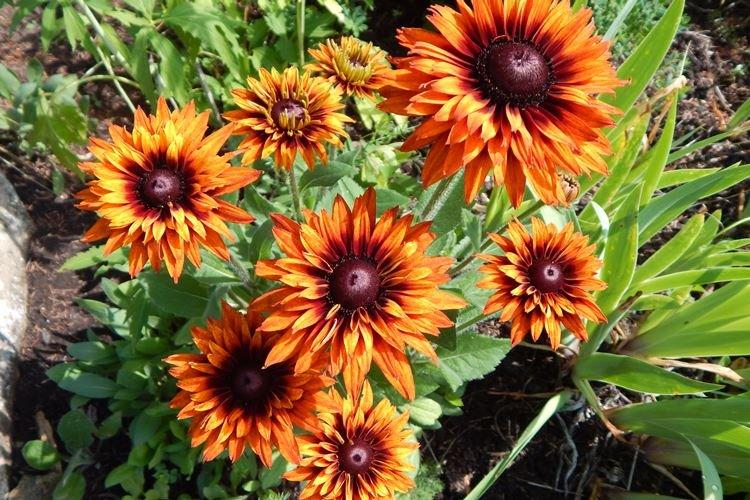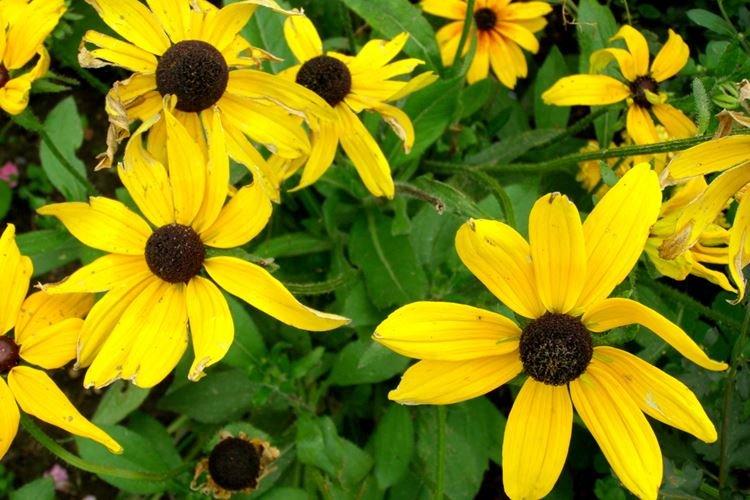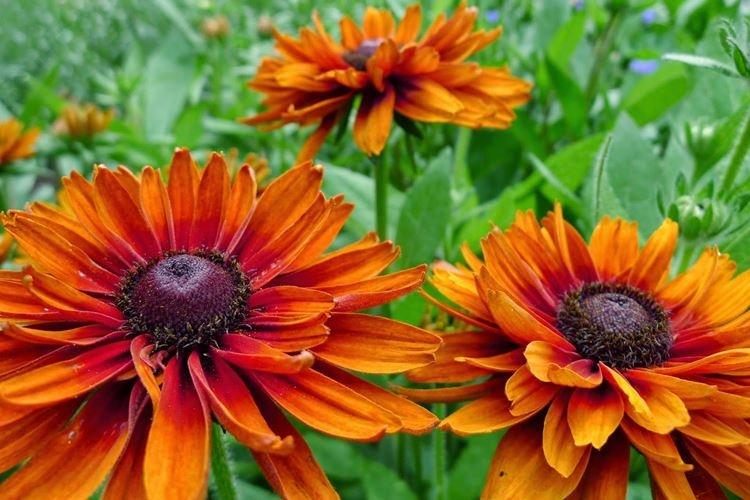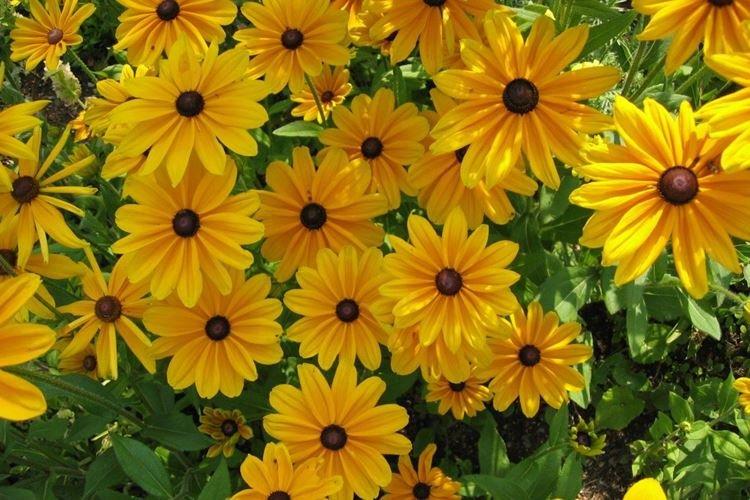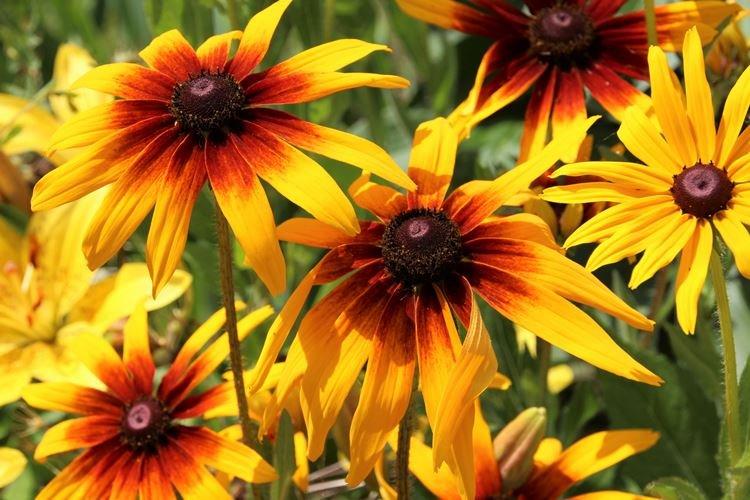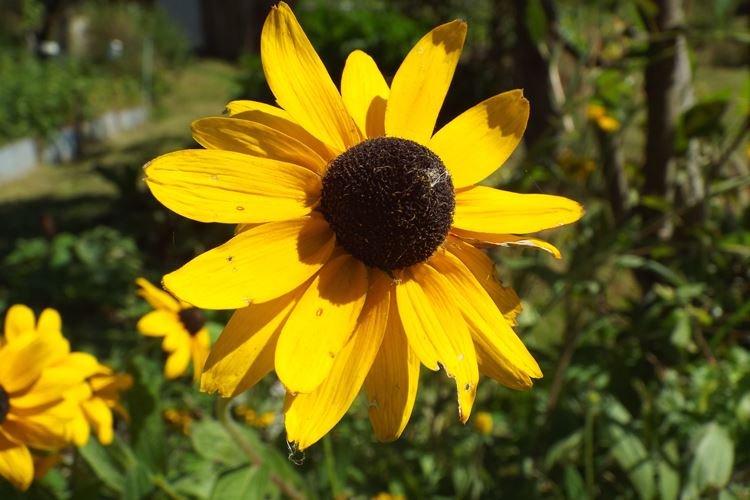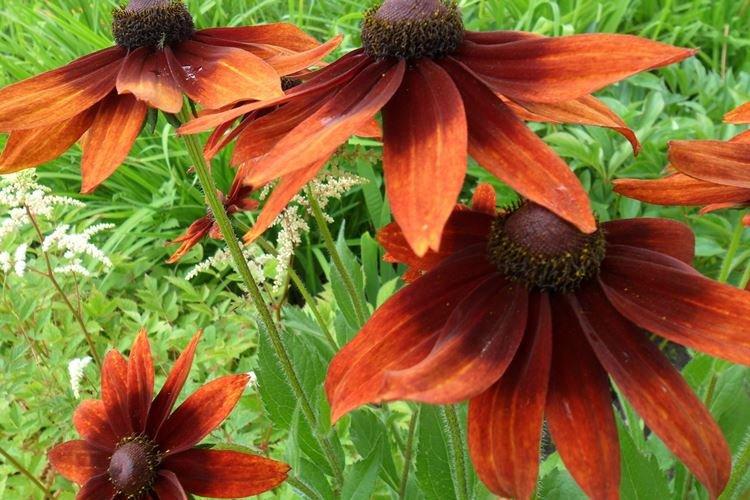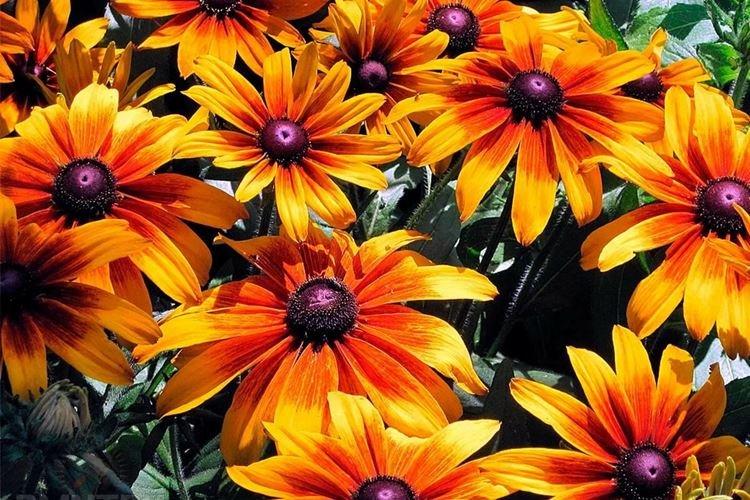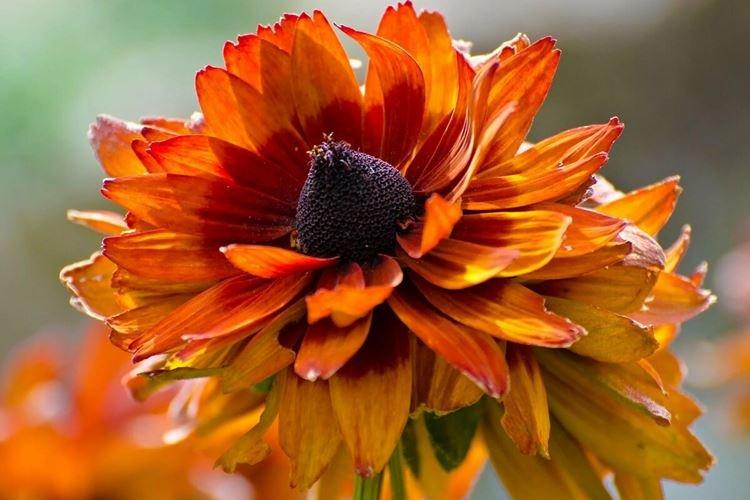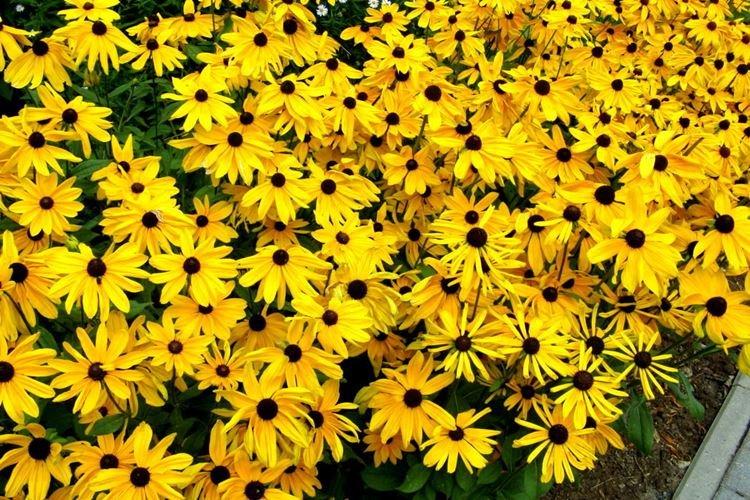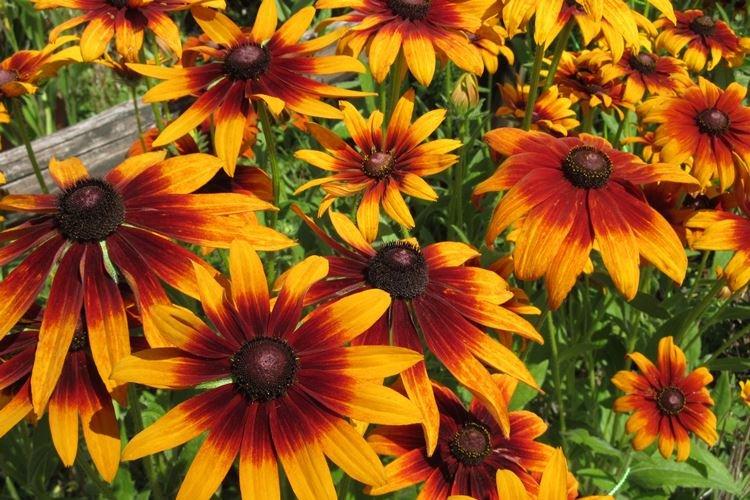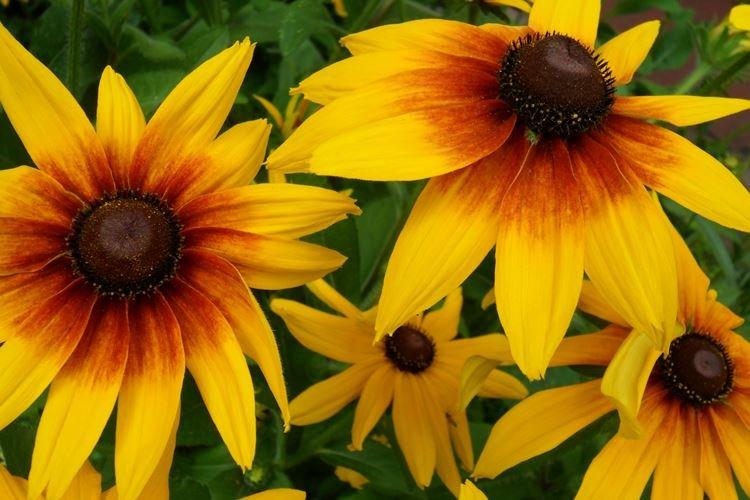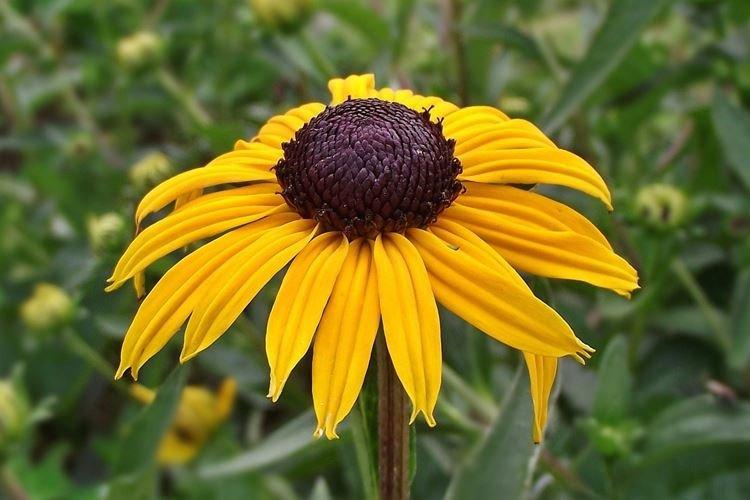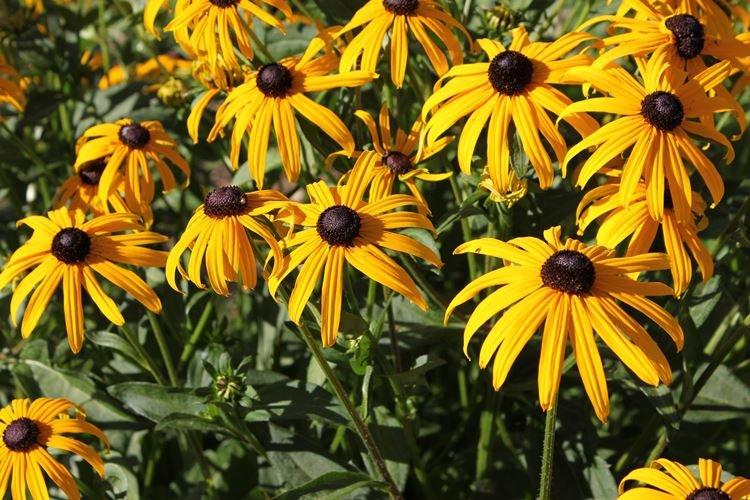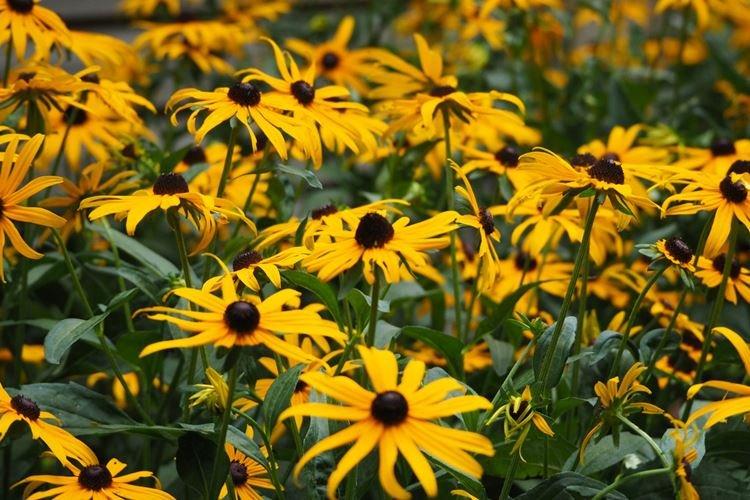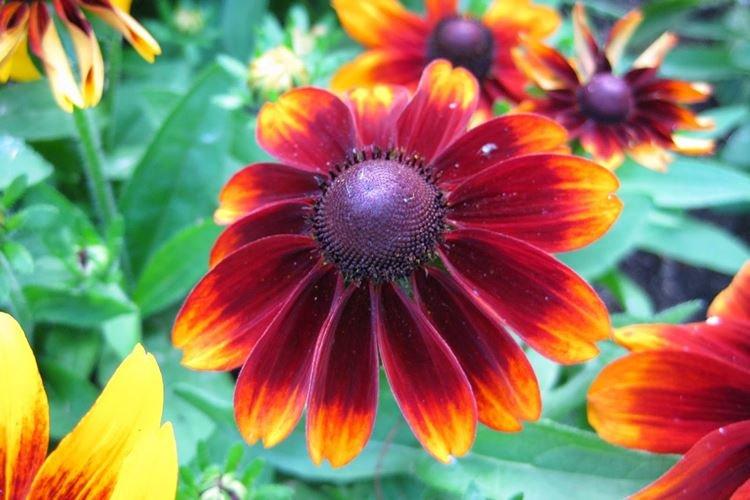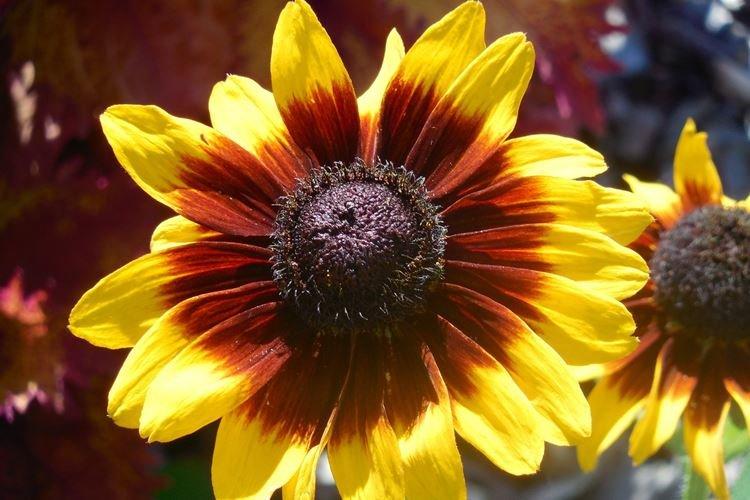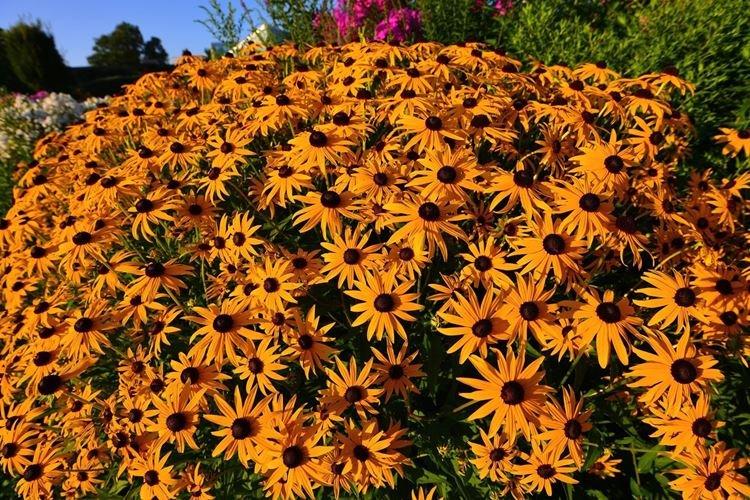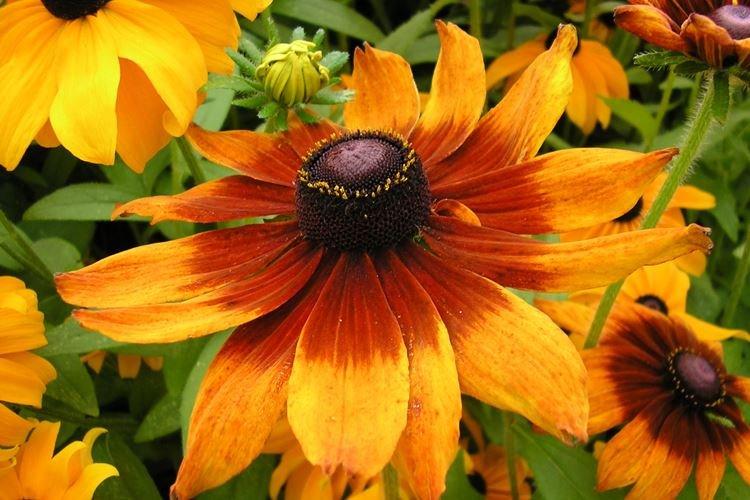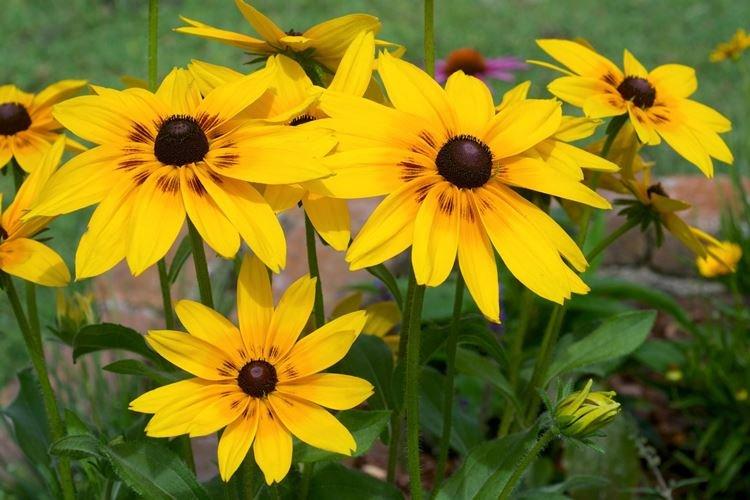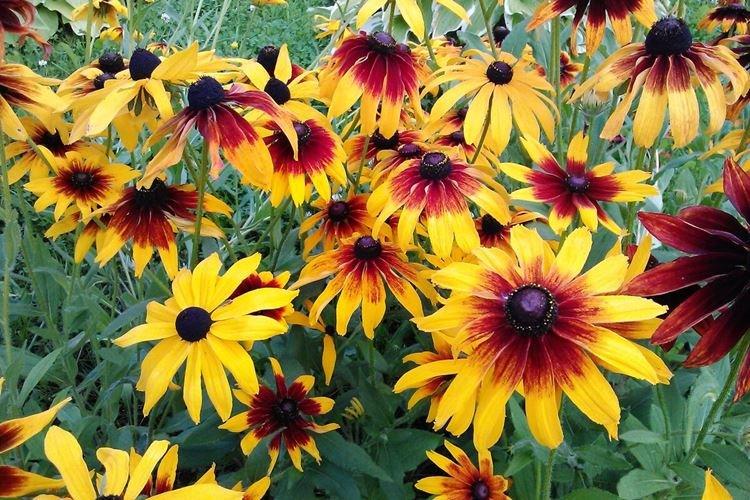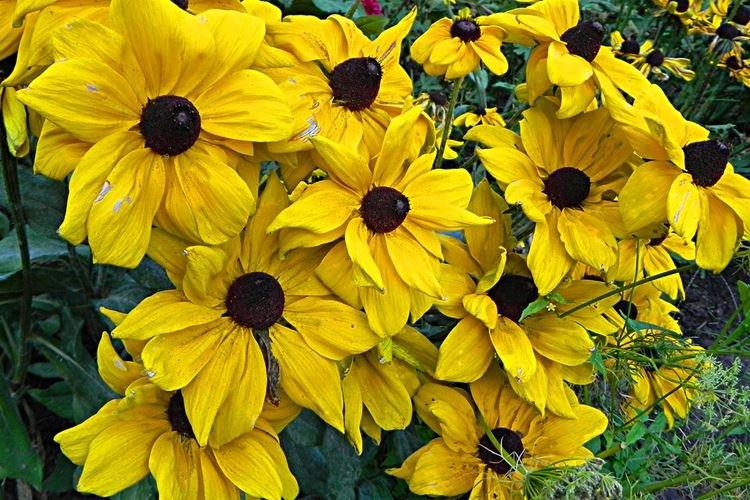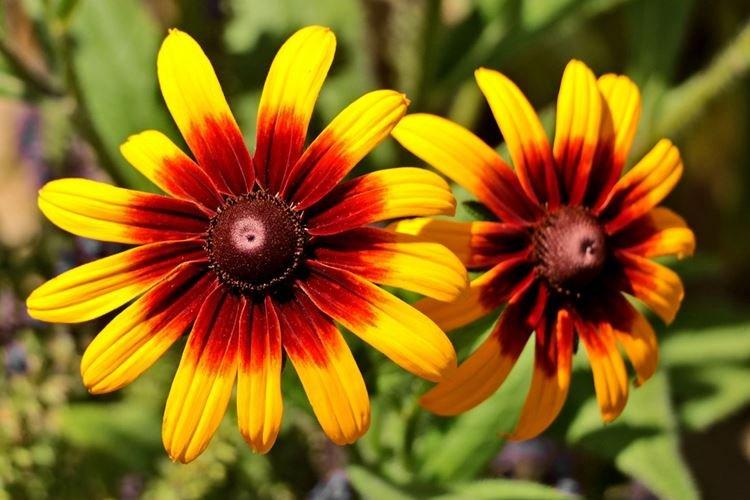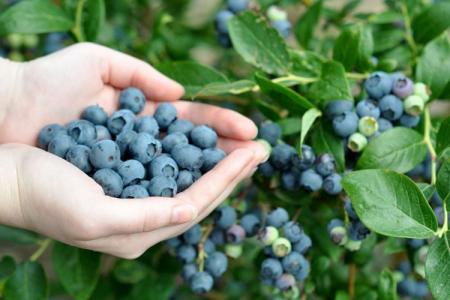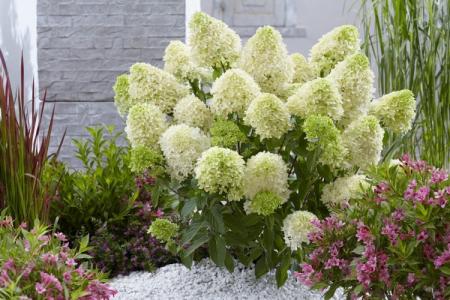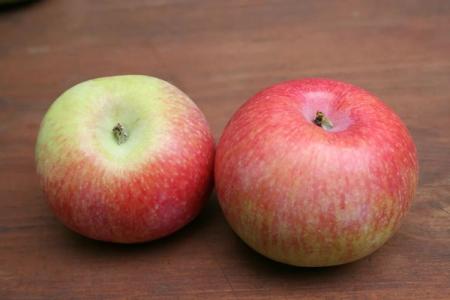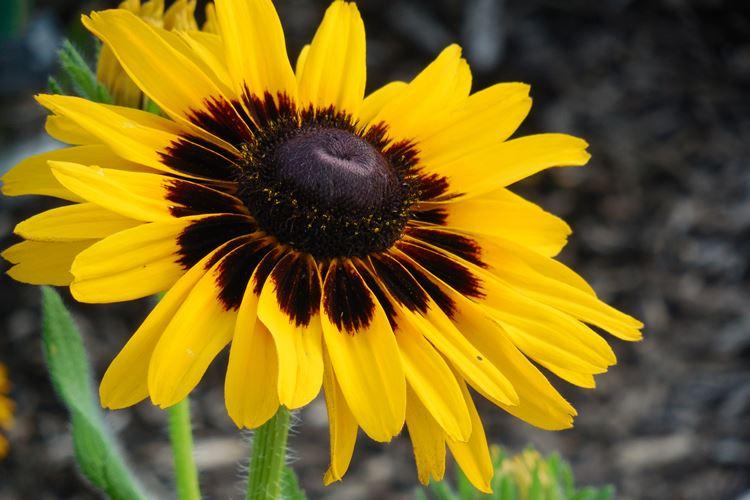
You've probably come across bright yellow-orange flowers that resemble daisies with a dark, voluminous center. This is a beauty - rudbeckia, which wonderfully complements the flower beds and does not need specific care. Perennial varieties will delight you with lush flowering and endurance up to five years. Let's talk about rudbeckia in more detail!
general information
In nature, rudbeckia is most often found in North America, but it is safely grown in Africa and Europe. This is a herbaceous plant from the Astrov family, and throughout its history it has collected many funny and eloquent nicknames. For example, "sun hat" or "black-eyed Suzanne."
The history of the origin of the name rudbeckia is also interesting. Flowers are often named after the botanist who discovered them, but this is not the case with rudbeckia. It was named after other scientists - Rudbekov, the youngest of whom at one time discovered the human lymphatic system.
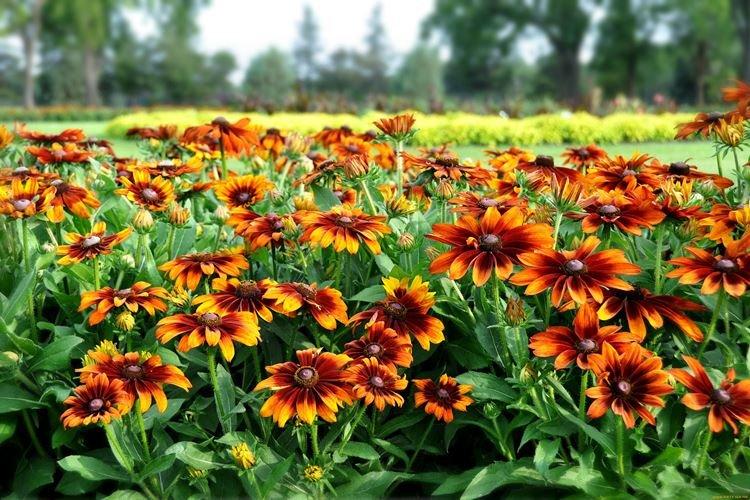
The tall, pubescent stems of rudbeckia can stretch up to 2 m, and in the wild up to 3 m. Leaves are of different sizes, from 5 to 25 cm, but they are usually quite large and dissected. From below, the plates grow on long petioles, but upward they all shorten until they disappear altogether.
The dark center is actually an elastic inflorescence of small tubular flowers. They are framed by reed petals of yellow or orange shades. Rudbeckia blooms with flowers up to 15 cm in diameter and gives fruits - seed pods.
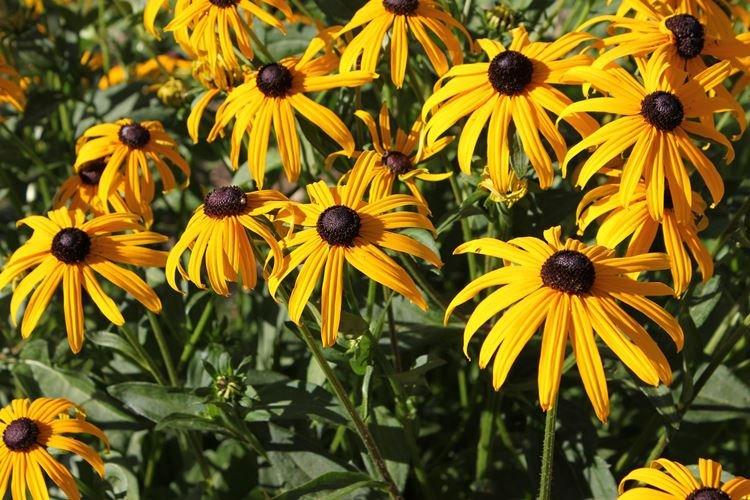
Rudbeckia varieties
Rudbeckia can be one-year, two-year, or perennial. In our latitudes, several varieties are most often found, which we will discuss further.
Rudbeckia hairy
The most common species in the middle lane grows to about 1 m. Low-growing varieties up to 35-60 cm are very popular, for example - Goldstrum, Marmalade, Goldflamme or Toto Rustic.
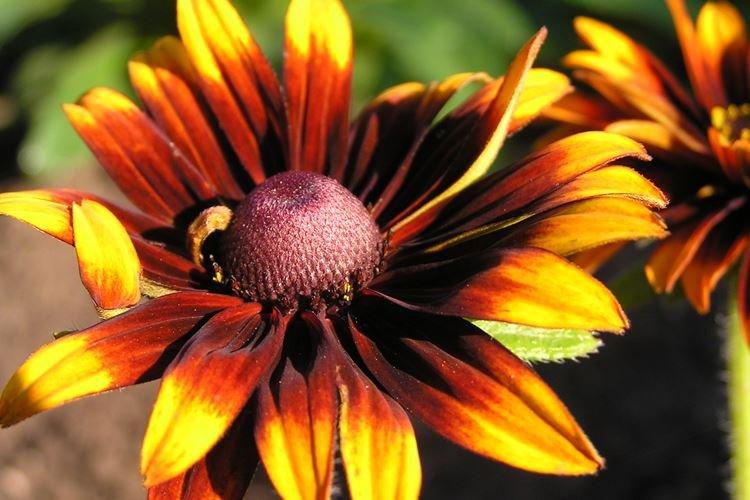
Giant rudbeckia
Matching its name, a large and tall species with waxy leaves covered with a bluish bloom grows to impressive sizes. It is often grown for cutting because the flowers do not fade in water for a long time.
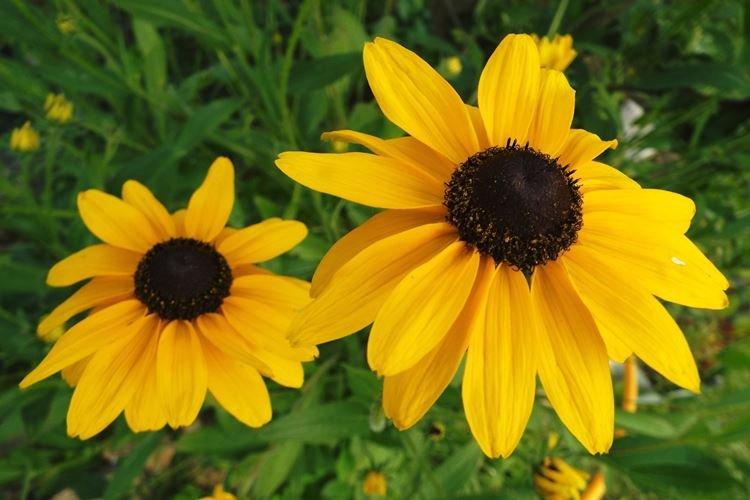
Rudbeckia brilliant
Medium-sized perennials stretch out to about 60 cm in height. The marginal petals acquire a rich yellow-orange hue and seem to shine.
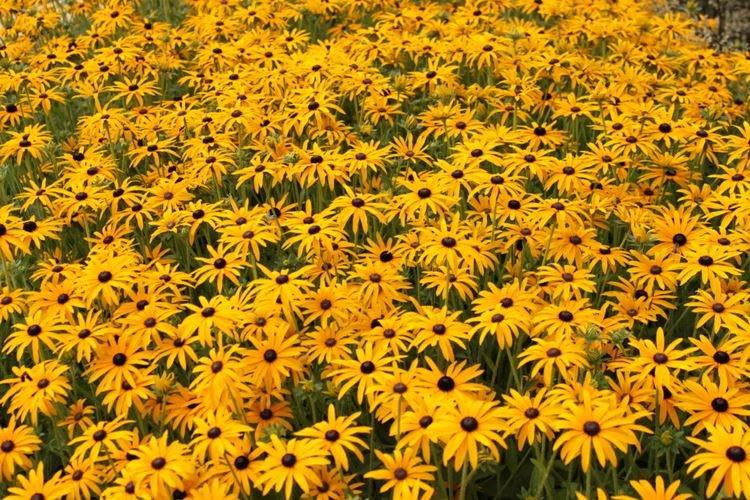
Rudbeckia bicolor
The peculiarity of the species is that the edge petals are painted in two tones. There are undersized varieties of 25 cm, and there are higher ones - up to 70 cm in height and with inflorescences up to 7 cm in diameter.
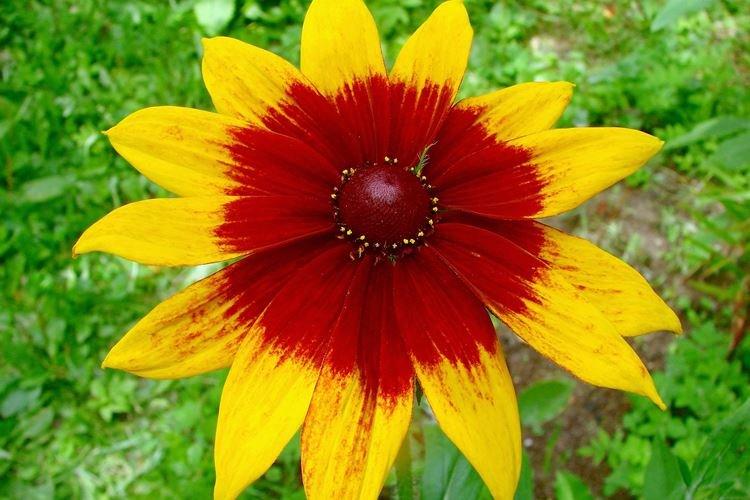
Rudbeckia glossy
This species has one of the largest inflorescences - they can open up to 12 cm in diameter. The middle is also slightly different - it is not brown, but rather green.
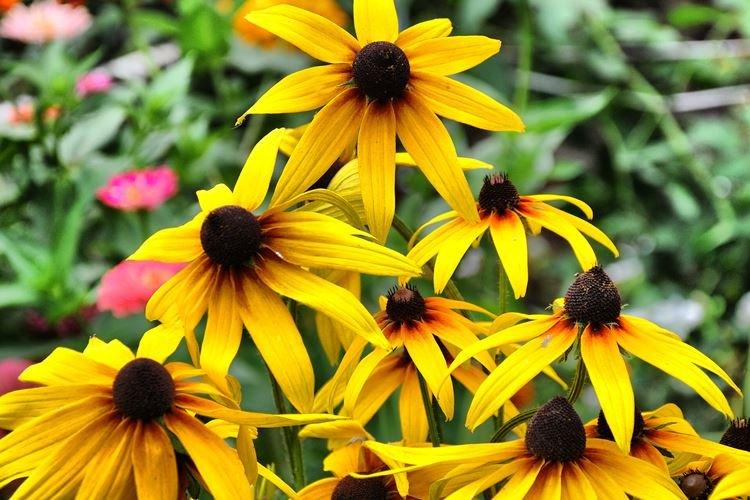
Rudbeckia dissected
One of the largest species stretches up to 2 m and builds up a voluminous wide rhizome, which can be propagated by division. The flowers are also proportionally large, with profusely growing marginal petals. Terry and semi-double varieties look very impressive.
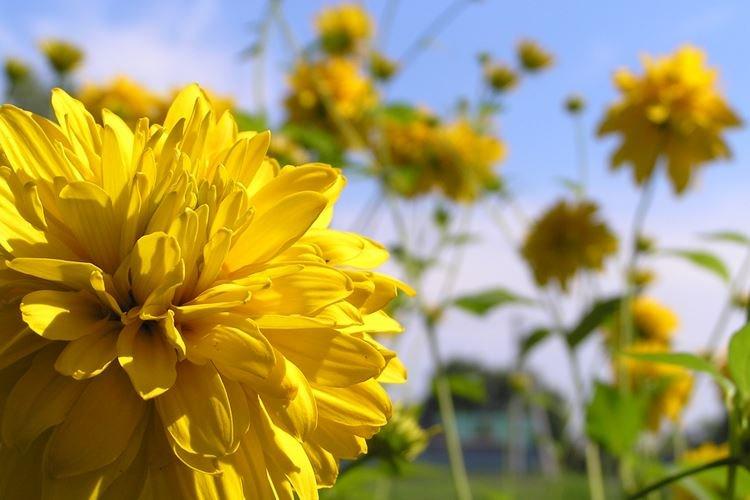
Rudbeckia enveloping
In such a rudbeckia, the shape of the inflorescence is clearly different, and the middle is more convex. Oval leaves grow without cuttings, and shoots stretch up to 80 cm.
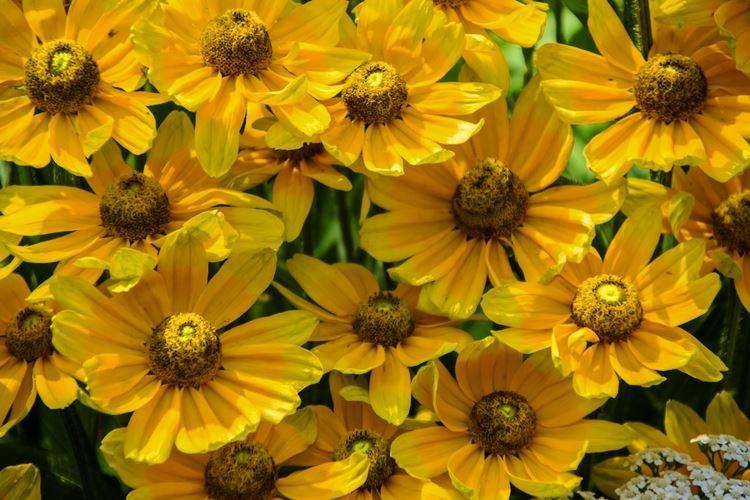
Rudbeckia is beautiful
Medium-sized rudbeckia most of all resembles yellow daisies with their inflorescences up to 10 cm. The edge petals with a seemingly jagged edge look very interesting.
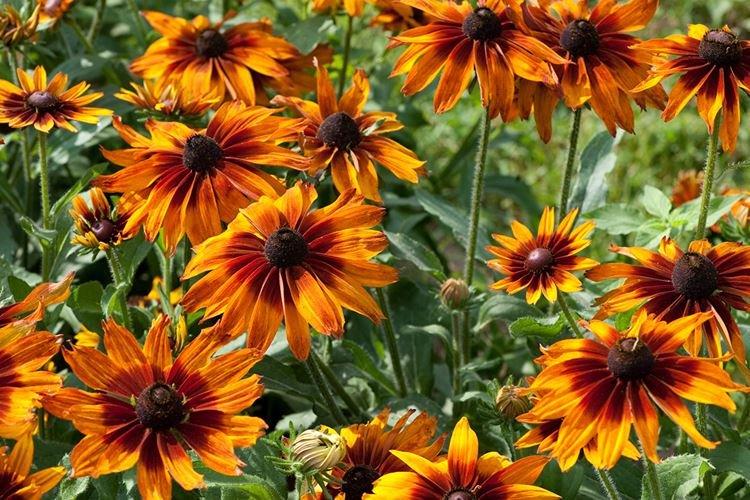
Western rudbeckia
The unusual variety is rarely seen in gardens, but instantly attracts attention. The marginal petals are almost not expressed or are completely absent, due to which only the volumetric dark center is visible.
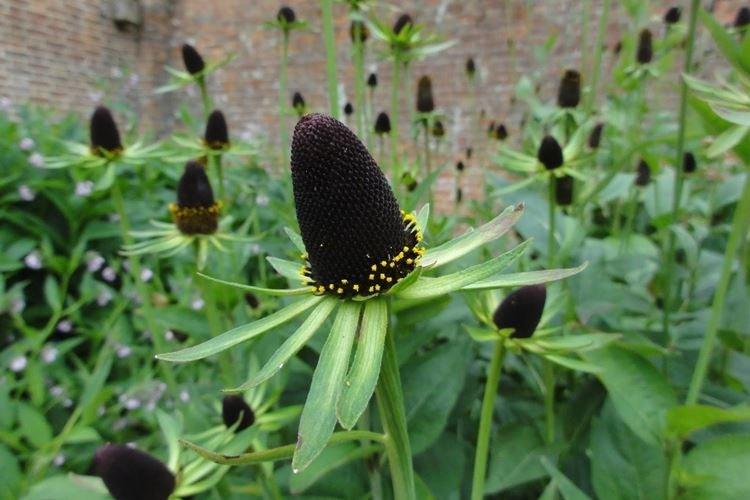
Rudbeckia triloba
One of the most lush-flowering varieties grows up to 1.5 m, and is densely covered with small yellow flowers. Unfortunately, such rudbeckia blooms beautifully, but not for long.
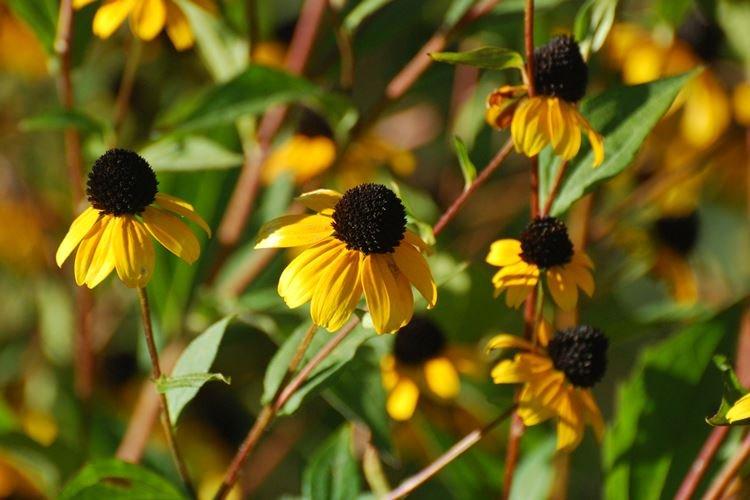
Rudbeckia hybrid
Large hybrid varieties combine the best features of different types of rudbeckia.Among them are beautiful cut flowers, varieties with increased frost resistance, and real giants with inflorescences up to 19 cm.
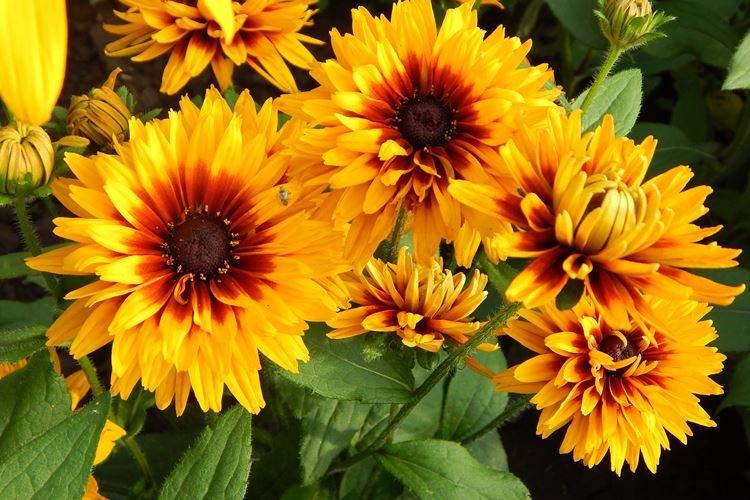
Rudbeckia care
Rudbeckia after planting almost does not need specific care and does not cause trouble for the gardener. Due to its good germination and vitality, it reproduces well by self-seeding, so we recommend that you control the situation.
Temperature and lighting
Rudbeckia is a summer flower, so it needs warmth and as much sun as possible. Literally a few varieties prefer a light shade, and this is rather an exception. They planted it, too, by summer, when the threat of frost has passed, otherwise it will grow and develop poorly.
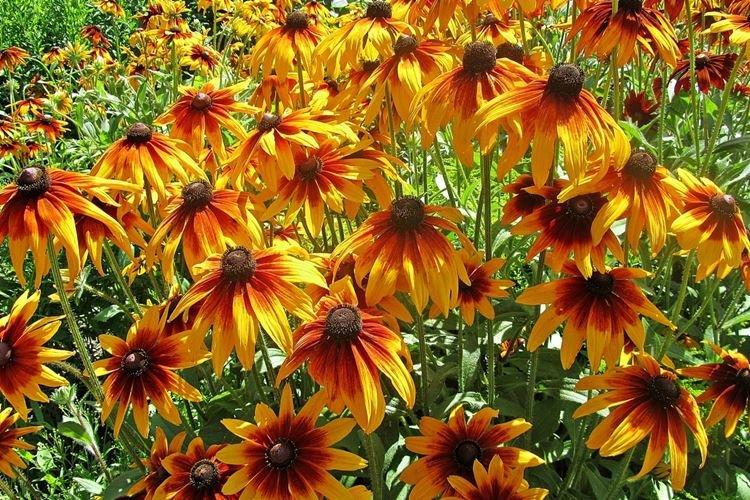
Watering
Rudbeckia does not need a huge amount of moisture - it needs moderate balanced watering. It is a heat-resistant flower that often has enough rain. Only in the driest season is it worth watering it additionally so that the flowers do not dry out and do not shrink.
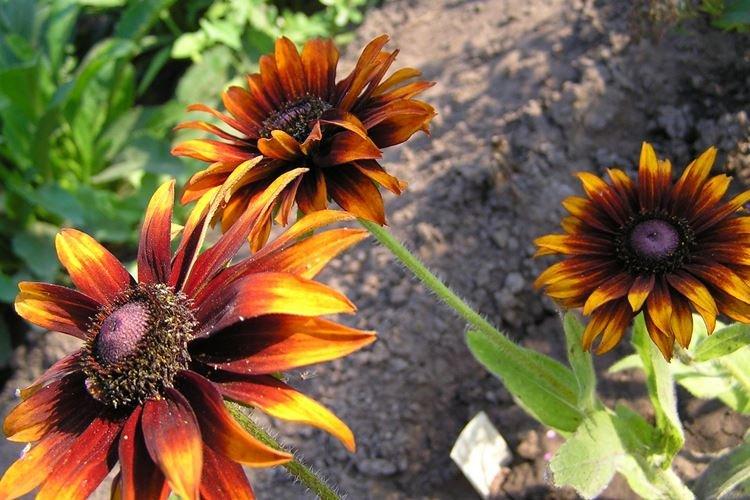
The soil
The flower is not too picky, so a moderately nutritious soil, dug up before planting, is enough. Every year, the rudbeckia must be mulched 3-5 cm, because its rhizome grows up and because of this it opens.
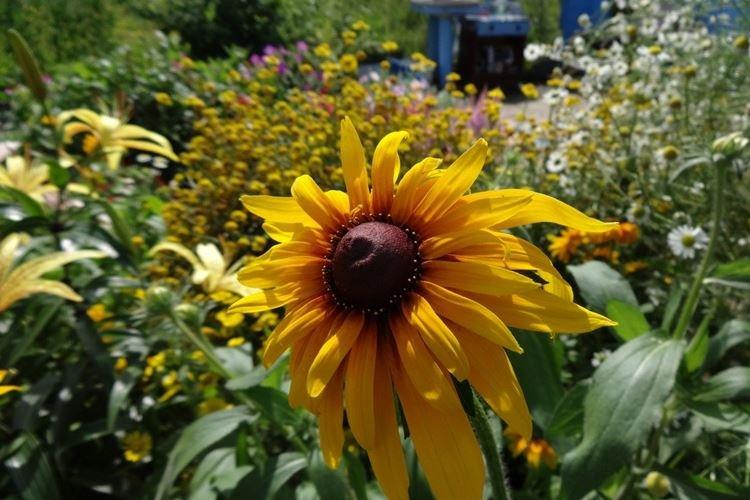
Fertilizers and feeding
For feeding at the beginning of the growing season, a solution of complex mineral fertilizers for flowering plants is used. For the second feeding, we recommend taking the same mixture, but with an interval of 2 weeks.
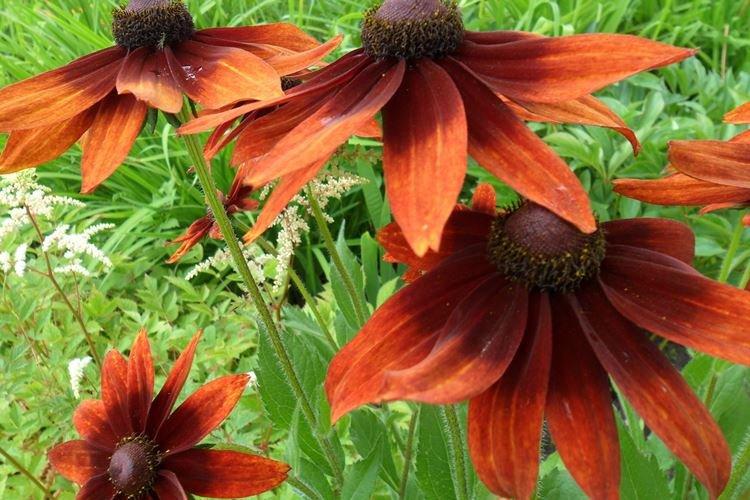
Transplant and reproduction
Rudbeckia is propagated by seeds, and only some perennial varieties can divide the rhizome. Seedlings are not required at all, and you can sow flowers directly in the open ground. They are planted by the end of June in beds with a step of about 15 cm, lightly sprinkled with earth and sprayed abundantly.
Seedlings are planted in the spring according to the same principle and kept under a film, periodically airing. Seedlings dive after the second pair of leaves, and when they finally take root, they begin to harden for planting. The seedlings are moved to the garden when the night frosts finally pass, with a step of about 30 cm.
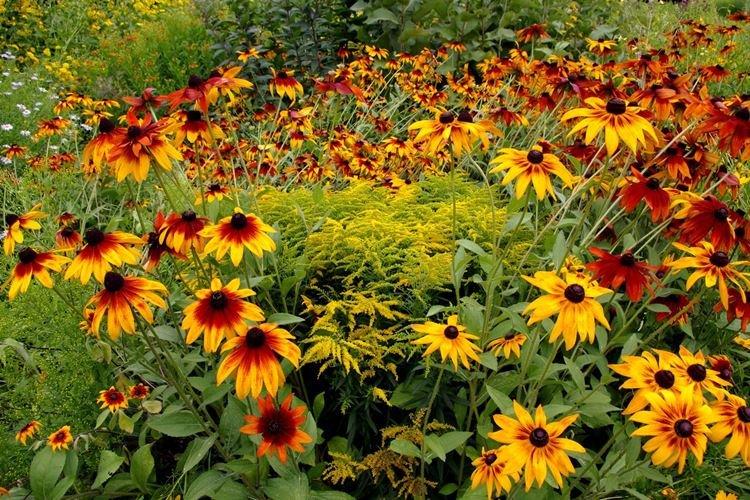
Pruning
You only need to prune tall and perennial varieties - they really shorten the shoots after flowering. It is recommended to tie up stems with a height of 1.5 m, so that strong winds do not break them. Only before wintering, perennial species are cut off to the very ground and covered with spruce branches, hay or humus.
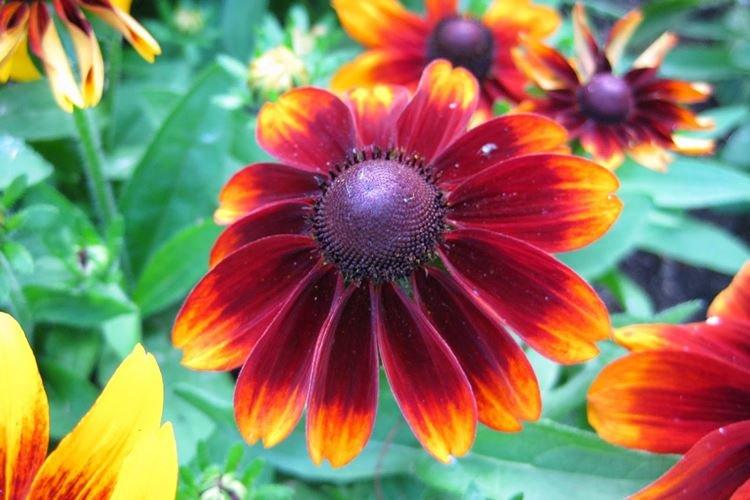
Pest and disease control
Rudbeckia almost does not get sick, and even powdery mildew does not pose a serious threat to it. Brown spots on the leaves can be a symptom of a nematode, and then the affected flowers will have to be removed from the site, and the rest - treated. Insects that eat leaves also love a tall flower, so do not forget about seasonal gardening!
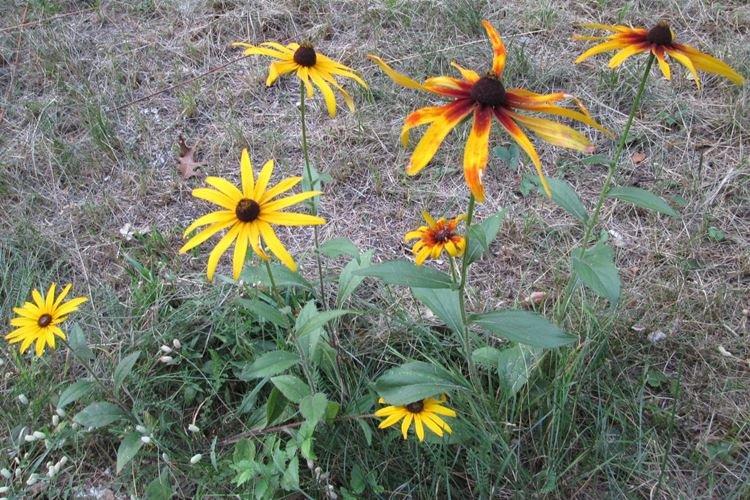
Rudbeckia - photo
Bright rudbeckia will make the garden colorful and sunny even on cloudy days. See how good she looks in landscape compositions!
